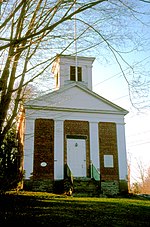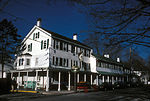Essex Village, Connecticut
Census-designated places in ConnecticutCensus-designated places in Middlesex County, ConnecticutEssex, ConnecticutUse mdy dates from July 2023Villages in Connecticut ... and 1 more
Villages in Middlesex County, Connecticut

Essex Village is a village and census-designated place (CDP) in the town of Essex, Connecticut, in the United States. The population was 2,583 at the 2020 census, out of 6,733 in the entire town of Essex. The government offices of the town are located within the village.
Excerpt from the Wikipedia article Essex Village, Connecticut (License: CC BY-SA 3.0, Authors, Images).Essex Village, Connecticut
Pratt Street,
Geographical coordinates (GPS) Address Nearby Places Show on map
Geographical coordinates (GPS)
| Latitude | Longitude |
|---|---|
| N 41.353333333333 ° | E -72.390833333333 ° |
Address
Pratt Street 1
06426
Connecticut, United States
Open on Google Maps









